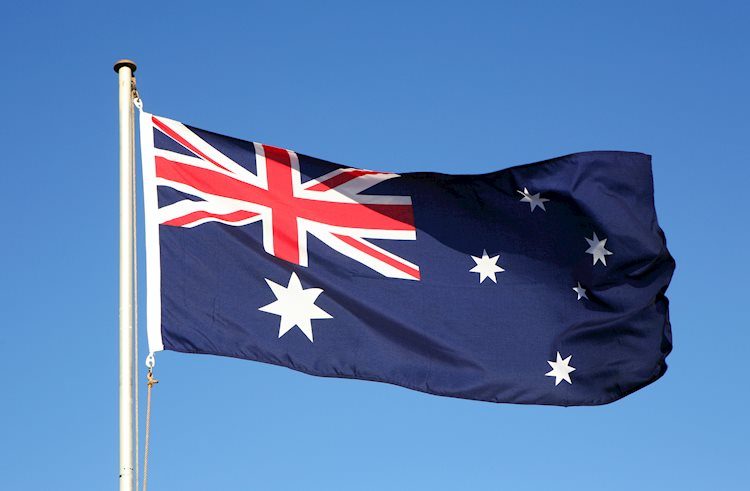- ASX 200 Index extends its gains on expectations of RBA reducing interest rates in the second half of 2024.
- Australia’s Consumer Inflation Expectations increased to 4.3% in March, against the previous rise of 4.5%.
- Allup Silica has extended its application potential by achieving high-purity results from its Sparkler project.
The ASX 200 Index rises to nearly 7,900, up by 0.26% on Thursday, extending gains to new record highs. Positive market sentiment is bolstered by subdued Consumer Inflation Expectations and Retail Sales figures from Australia, which raise expectations of the Reserve Bank of Australia (RBA) adopting a more accommodative approach to interest rates. Furthermore, Wednesday’s release of the Australian Monthly Consumer Price Index, which was lower than anticipated, lent further support to the Australian stock market.
Australia’s consumer expectations of future inflation during the next 12 months stood at 4.3% in March, against the previous increase of 4.5%. The seasonally adjusted Retail Sales increased by 0.3% month-over-month in February, against the expected 0.4% and 1.1% prior.
The ASX 200 Index surged, driven by strong performances in mining stocks, buoyed by rising prices of gold, iron ore, and lithium. Among the top gainers were Arcadium Lithium, which soared by 10.20% to 4.43; Alumina, which saw a rise of 5.60% to 1.42; and Whitehaven Coal, which increased by 5.27% to 7.10. On the other side, Xero experienced a decline of 1.09% to 132.43; Audinate Group fell by 0.75% to 21.24; and Tabcorp Holdings dipped by 1.05% to 0.76.
Allup Silica has expanded its potential applications with promising results from its Sparkler project in southern Western Australia, where bulk sample tests of high-purity silica have surpassed industry standards. This positions the product well for various high-purity applications, including photovoltaics and high-tech manufacturing.
Terra Uranium is enhancing its Canadian exploration and development endeavors by finalizing a binding letter of intent to acquire the Amer Lake uranium deposit in Nunavut. This move follows Terra’s recent acquisition of two new 100%-owned projects in Canada’s Athabasca Basin.
AIC Mines, a copper producer, has reported a significant 86% increase in ore reserves at its Jericho copper deposit, located south of its Eloise high-grade underground copper mine in Queensland. The revised reserve estimate now stands at 3.2 million tonnes grading 1.9% copper and 0.4 grams per tonne of gold, amounting to 61,100 tonnes of copper and 37,000 ounces of gold.
Australian Stock Market FAQs
Stock markets in Australia are managed by the Australian Securities Exchange (ASX), headquartered in Sydney. The main indices are the S&P/ASX 200 and the S&P/ASX 300, which track the performance of the 200 and 300 largest stocks by market capitalization listed on the exchange, respectively. The S&P/ASX 200 was launched in April 2000, and it is rebalanced every quarter.
Almost half of the index belongs to the financial sector, with major banks like the Commonwealth Bank of Australia, Westpac or National Australia Bank. The so-called materials sector is also relevant – comprising almost 20% of the weighting in the index – with mining giants such as BHP Group or Rio Tinto. Other important sectors are biotechnology, real estate, consumer staples, and industrials.
Many different factors drive the ASX 200, but mainly it is the aggregate performance of the component companies revealed in their quarterly and annual earnings reports the main factor behind its performance. Commodity prices can also affect the index given its significant share of mining companies. Macroeconomic data such as Gross Domestic Product (GDP) growth, inflation, or unemployment data from Australia is also important as they are indicators of the health of the country’s economy and thus the profitability of its largest companies. Global economic conditions may also play a role, particularly from China, as the Asian country is Australia’s largest trading partner.
The level of interest rates in Australia, set by the Reserve Bank of Australia (RBA), also influences the ASX 200 and ASX 300 indexes as it affects the cost of credit, on which many firms are heavily reliant. Generally, when the RBA cuts interest rates (or signals it is going to do it), it is positive for the Australian stock market as it means a lower cost of credit for companies and higher economic growth ahead, likely boosting sales. On the contrary, if the RBA signals that it will increase interest rates, this tends to weigh on the index. As always, there is a caveat: banks. Financial institutions tend to benefit from higher interest rates because they earn more from lending to other businesses, thus boosting their overall income.
